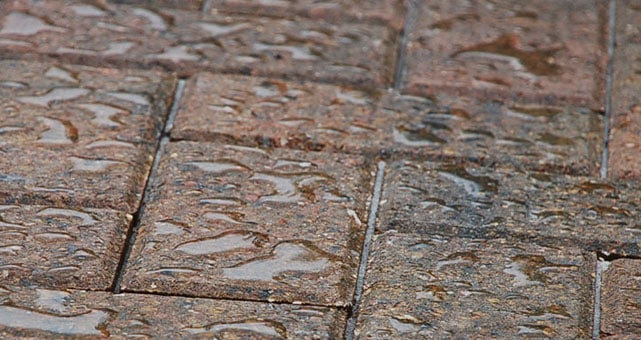
If your neighbor is able to keep his driveway or patio looking brand new and vibrant, chances are he has used a Paving Stone Sealer. Paving Stone Sealers minimize or eliminate the porosity of most stone. If the stone is left unsealed, it will be most certainly be prone to certain types of damage such as
oil, salt, rust, harsh pool chemicals, colour fading from UV rays, dirt, and even autocare products.
Although applying the paving stone sealer isn’t difficult, having the right equipment to do it makes it simpler and easier to manage. Here is a list of the most essential and necessary equipment:
- Paint Roller (thick nap) or Pump Sprayer
- Rubber Gloves (throw away)
- Goggles (you really don’t want this stuff in your eyes)
- Work Pants (don’t care if you get sealer on it)
- Work Boots (if you get this stuff on your sneakers, they will be ruined)
- Pressure washer or hose with nozzle
In addition to having the right equipment for the job, here are some professional tips before applying, applying and using the paving stone sealer to keep that fresh and new look for your interlocking stones:
1. Remove all oil, grease, dirt
You can use the proper cleaners or use a power washer/hose with nozzle and allow the surface to dry for 24 hours before applying the sealer. If you are using a power washer, keep the angle at a shallow angle to minimize the loss of joint sand.
2. Removing efflorescence
Allow 30 to 60 days for the efflorescence (whitish salt) to escape from the stone. If the efflorescence is still visible, use efflorescence cleaner to remove it and let it dry 24-48 hours and then sweep the paving stones with a stiff bristled brush.
3. Keep water away
If you get water on the surface or on the roller while applying, a cloudy spot will form on the paving stone surface. If you sweat a lot, consider wearing a hat or headband to keep the sweat from dripping onto the sealer.
4. Watch the weather
Keep your eye on the weather as you do not want to apply the sealer below 10 degrees, or when there is a chance of rain (surface must be dry for at least 24 hours).
5. Increase durability
You can increase the durability of the surface when you apply the sealer in two thin coats than one thick coat. This will also reduce the possibility of the paving stone surface turning white.
6. Prevent streaking
For surfaces being sealed for the first time, apply a second coat by rolling in a cross direction than the first coat to prevent streaking. Allow first coat to dry prior to second coat application (drying time dependent on sealer brand). Allow sealed surfaces to dry for 24 hours before using. This will be more apparent on large flat surfaces such as flagstone.
6. Cleaning your tools
You must clean the tools immediately after the application. If you use a solvent-based sealer, use a lacquer thinner to clean the nozzle, canister and hose of your pump sprayer.

Thank you so much for talking about how using sealant on your interlocking stone can help it look like new. I can see that taking the time to consult with a professional about this can help you choose the best type of sealant for the type of material you have and make sure it is installed properly. It is important to remember that doing a proper research can help you find reviews and ratings that can lead you to the best contractor to work with.
Definitely needed this today!!! Thank you for posting such a detailed post
What an informative post. This is something that I have been searching for.
What an informative post. This is something that I have been searching for.